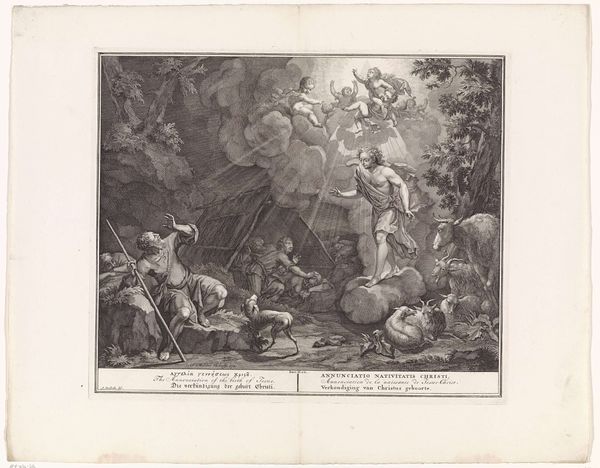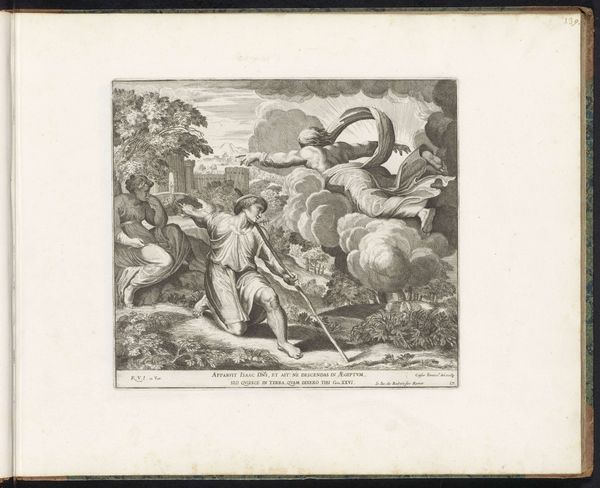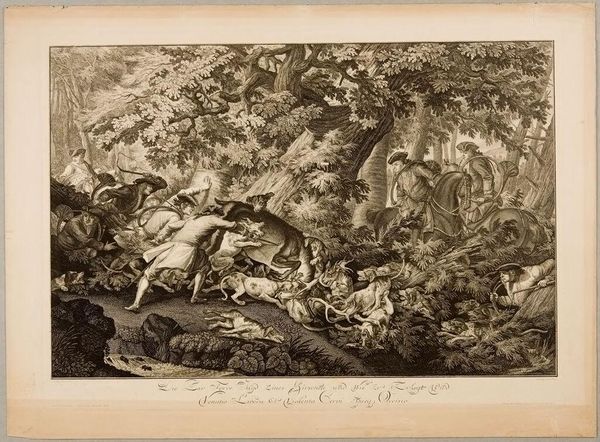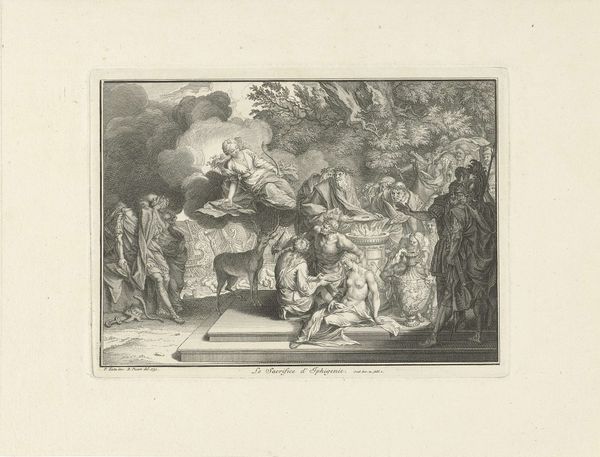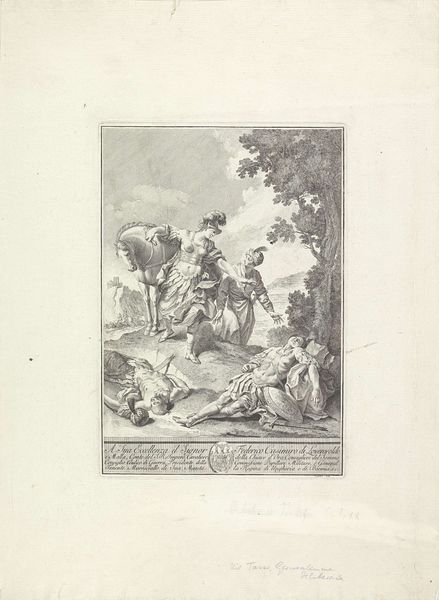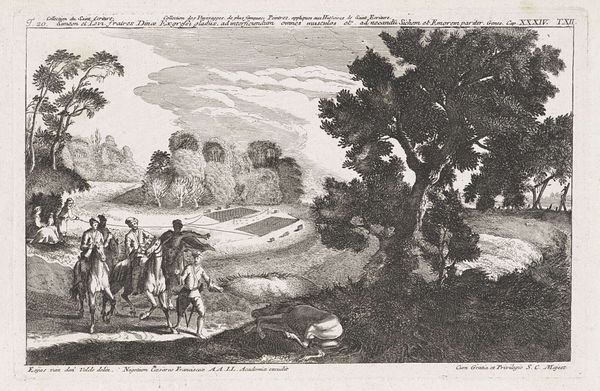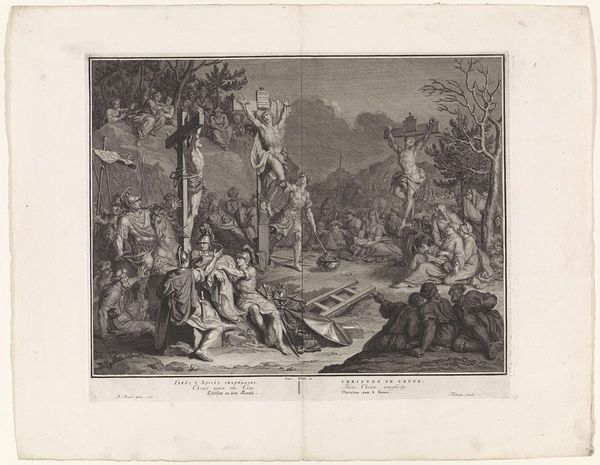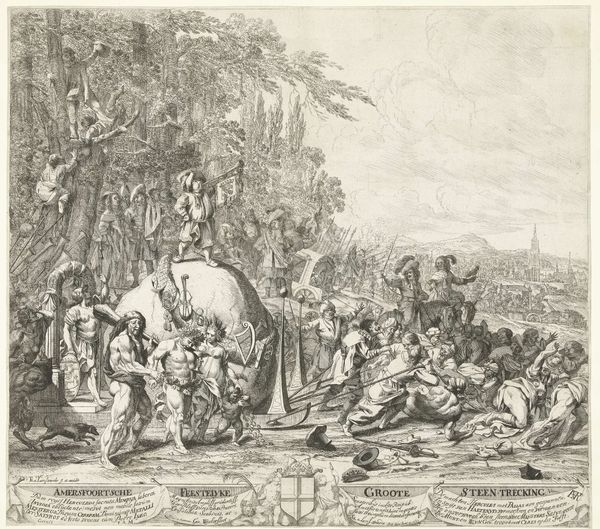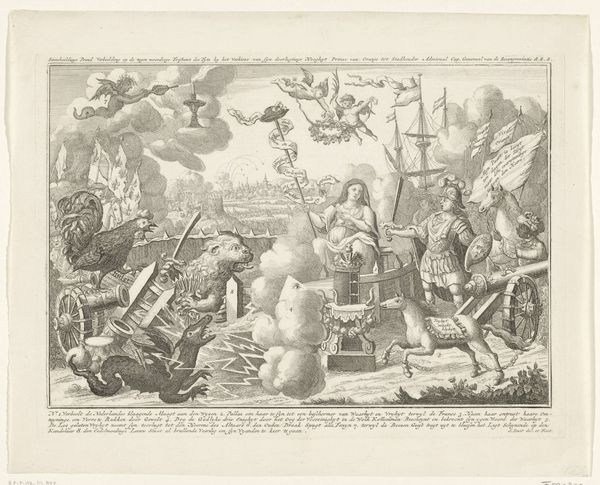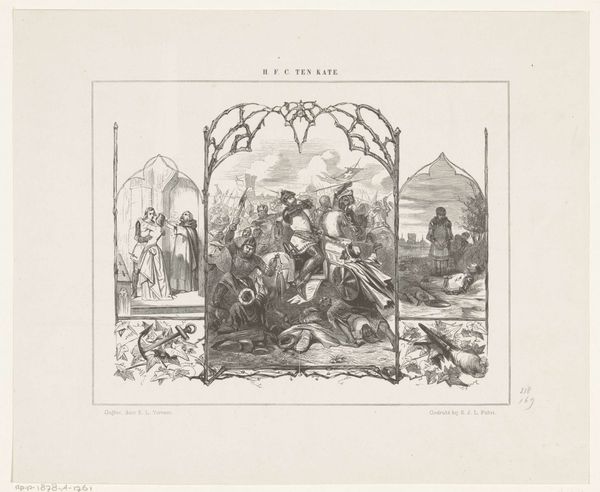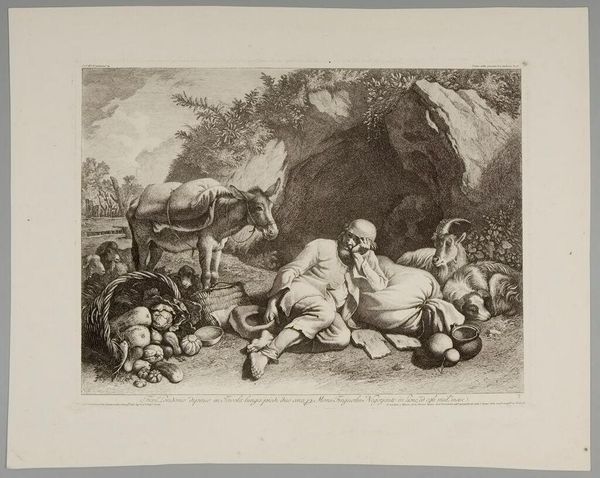
print, engraving
#
neoclacissism
# print
#
landscape
#
genre-painting
#
history-painting
#
engraving
Dimensions: height 235 mm, width 331 mm
Copyright: Rijks Museum: Open Domain
Giovanni David created this etching titled 'Herdersfamilie met vee bij antieke graftombe' sometime between 1749 and 1790. At its heart lies the juxtaposition of pastoral life against the backdrop of ancient ruins, a prevalent motif in art history. Observe the tomb, adorned with classical figures—symbols of a bygone era. These monuments, now overgrown and weathered, find themselves amidst grazing sheep and resting herders. This pairing evokes a sense of timelessness, echoing the 'Et in Arcadia ego' theme. The ruins are a reminder of mortality, while the pastoral scene symbolizes enduring natural cycles. This motif, which originated in classical antiquity, resurfaces in the Renaissance, and continues to evolve through the 18th century, mirrors humanity's contemplation of the past, reflecting on cultural memory and the transience of human achievement. The image touches a deep, subconscious chord, prompting reflection on the cyclical nature of history.
Comments
No comments
Be the first to comment and join the conversation on the ultimate creative platform.
